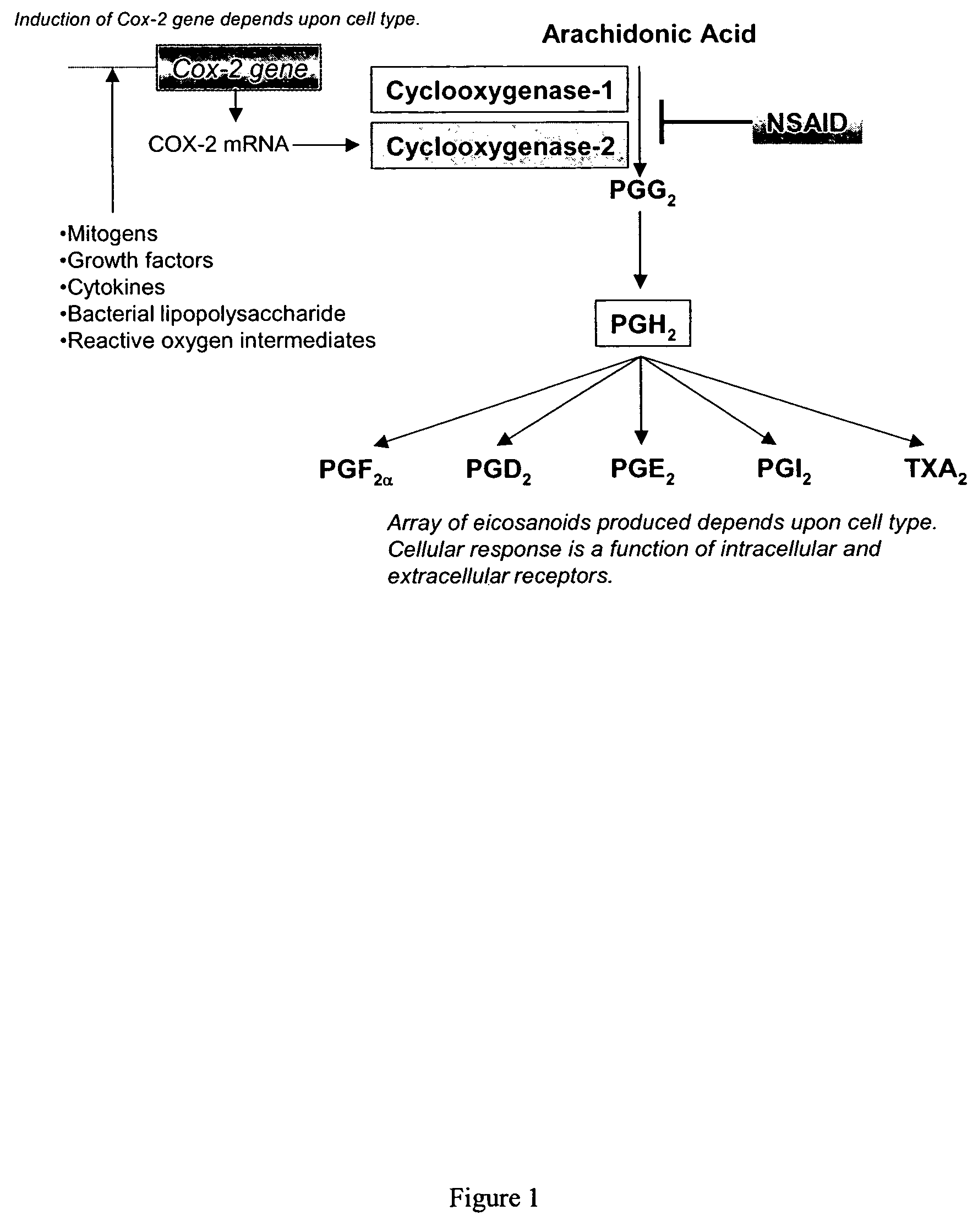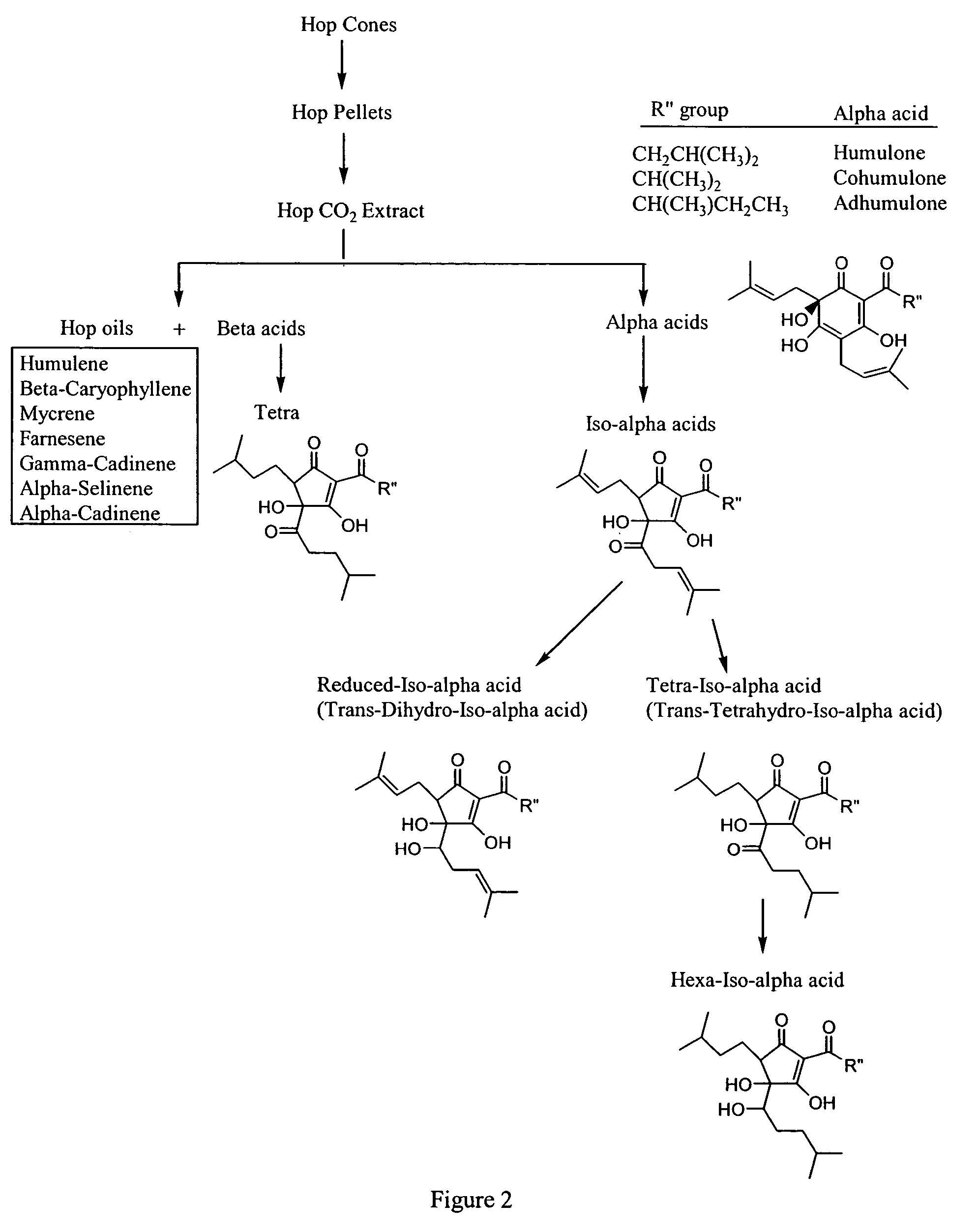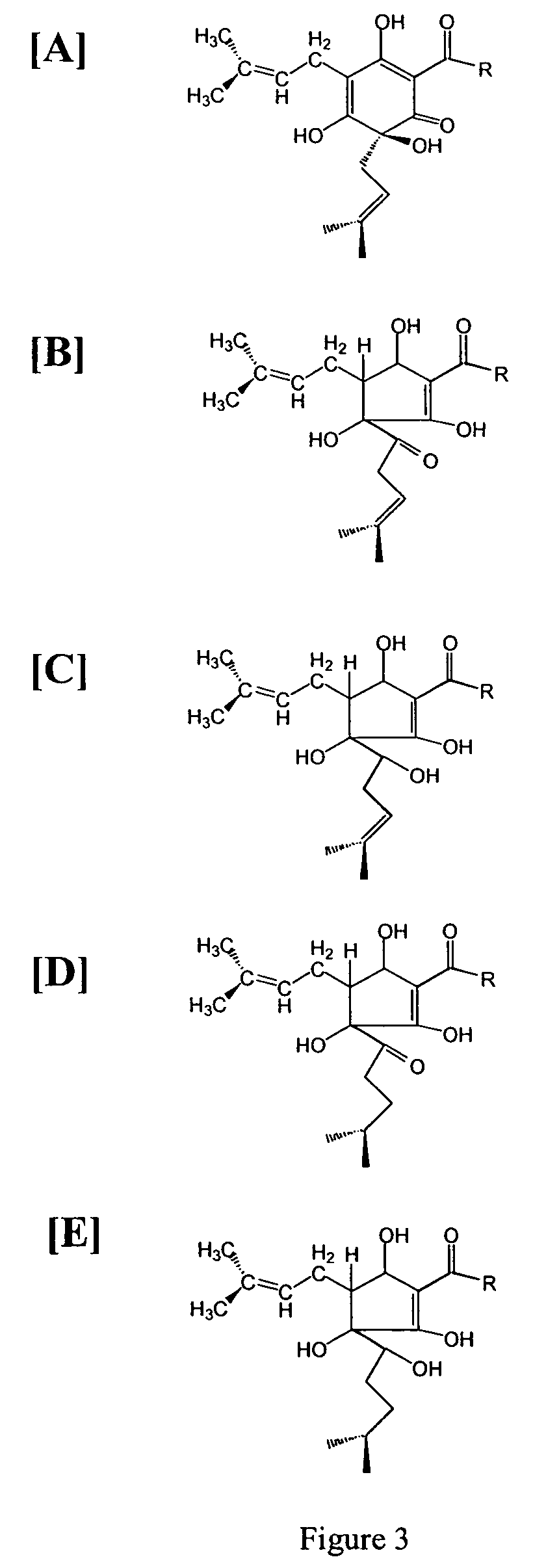Anti-inflammatory pharmaceutical compositions for reducing inflammation and the treatment or prevention of gastric toxicity
a technology of anti-inflammatory pharmaceutical compositions and compositions, which is applied in the field of pharmaceutical compositions, can solve the problems of inability to achieve the differences in assay methodology can have profound effects on results, and cannot be used in ideal cox-2 selectivity assays, etc., to inhibit undesirable effects, enhance desirable effects, and inhibit undesirable effects.
- Summary
- Abstract
- Description
- Claims
- Application Information
AI Technical Summary
Benefits of technology
Problems solved by technology
Method used
Image
Examples
example 1
AGS Gastric Mucosal Cells Constitutively Express Both Cyclooxygenase-1 and Cyclooxygenase-2
[0132]Summary—This example demonstrates that the AGS human gastric mucosal cell line, possessing constitutive expression of COX-1 and COX-2, is a model for assessing the gastrointestinal toxicity of cyclooxygenase-inhibiting compounds.
[0133]Equipment used in this example included: an OHAS Model #E01140 analytical balance, a Form a Model #F1214 biosafety cabinet (Marietta, Ohio), various pipettes to deliver 0.1 to 100 μL (VWR, Rochester, N.Y.), a cell hand tally counter (VWR Catalog #23609-102, Rochester, N.Y.), a Form a Model #F3210 CO2 incubator (Marietta, Ohio), a hemacytometer (Hausser Model #1492, Horsham, Pa.), a Leica Model #DM IL inverted microscope (Wetzlar, Germany), a PURELAB Plus Water Polishing System (U.S. Filter, Lowell, Mass.), a 4° C. refrigerator (Form a Model #F3775, Marietta, Ohio), a vortex mixer (VWR Catalog #33994-306, Rochester, N.Y.), and a 37° C. water bath (Shel Lab M...
example 2
Inhibition of PGE Synthesis in AGS Gastric Mucosal Cells and A549 Pulmonary Cells by Nonsteroidal Anti-Inflammatory Drugs
[0141]Summary—This example illustrates that inhibition of PGE2 synthesis in AGS gastric cells and A549 pulmonary cells by NSAIDs correlates with their observed relative clinical gastrictoxicity.
[0142]Chemicals—Commercial formulations of rofecoxib tablets and celecoxib capsules were used. PGE2 EIA kits were obtained from Cayman Chemical (Ann Arbor, Mich.). Anti-COX-1 and anti-COX-2 rabbit polyclonal antisera were obtained from Upstate Biotechnology (Waltham, Mass.), and donkey anti-goat IgG-HRP was procured from Santa Cruz Biotechnology (Santa Cruz, Calif.). Heat Inactivated Fetal Bovine Serum (FBS-HI Cat. #35-011CV) and Dulbecco's Modification of Eagle's Medium (DMEM Cat #10-013CV) was purchased from Mediatech (Herndon, Va.). IL-1β and all standard chemicals and non-steroidal anti-inflammatory drugs (NSAIDs), unless noted, were obtained from Sigma (St Louis, Mo.) ...
example 3
Inhibition of PGE2 Synthesis in Stimulated and Nonstimulated Murine Macrophages by Hops (Humulus lupulus) Compounds and Derviatives
[0155]Summary—This example illustrates that hops fractions and derivatives inhibit COX-2 synthesis of PGE2 preferentially over COX-1 synthesis of PGE2 in the RAW 264.7 murine macrophage model.
[0156]Chemicals and reagents—Bacterial lipopolysaccharide (LPS; B E. coli 055:B5) was from Sigma (St. Louis, Mo.). Hops fractions (1) alpha hop (1% alpha acids; AA), (2) aromahop OE (10% beta acids and 2% isomerized alpha acids, (3) isohop (isomerized alpha acids; IAA), (4) beta acid solution (beta acids BA), (5) hexahop gold (hexahydro isomerized alpha acids; HHIAA), (6) redihop (reduced isomerized-alpha acids; RIAA), (7) tetrahop (tetrahydro-iso-alpha acids THIAA) and (8) spent hops were obtained from Betatech Hops Products (Washington, D.C., U.S.A.). The spent hops were extracted two times with equal volumes of absolute ethanol. The ethanol was removed by heating...
PUM
| Property | Measurement | Unit |
|---|---|---|
| pressure | aaaaa | aaaaa |
| pressure | aaaaa | aaaaa |
| weight percent | aaaaa | aaaaa |
Abstract
Description
Claims
Application Information
 Login to View More
Login to View More - R&D
- Intellectual Property
- Life Sciences
- Materials
- Tech Scout
- Unparalleled Data Quality
- Higher Quality Content
- 60% Fewer Hallucinations
Browse by: Latest US Patents, China's latest patents, Technical Efficacy Thesaurus, Application Domain, Technology Topic, Popular Technical Reports.
© 2025 PatSnap. All rights reserved.Legal|Privacy policy|Modern Slavery Act Transparency Statement|Sitemap|About US| Contact US: help@patsnap.com



